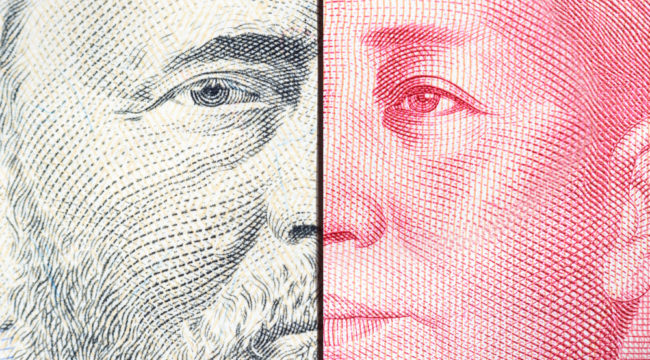The Real Purpose of the Tariffs
On Thursday, March 22, the trade war that has been brewing between China and the U.S. broke into full-scale combat.
President Trump signed an executive order pursuant to Section 301 of the Trade Act of 1974. This order imposed $50 billion of penalties and tariffs on Chinese exports to the U.S.
I have described this as the “nuclear option.”
Within hours, China fired back. China imposed tariffs on $3 billion of U.S. exports as retaliation for the Section 301 action by Trump.
The first trade war since the 1930s is now in full swing and may continue for years to come.
Initially, the stock market decided the trade war fears were overblown. Inside the Beltway, conventional wisdom said that Trump would not follow through on his threats, that exemptions would be issued to Canada and Mexico and that even the tariffs on China, South Korea and Europe would be mitigated.
Yet the conventional wisdom proved wrong and the stock market has now shifted its view.
Just look at the market reaction over the past few trading sessions:
Markets sold off violently on Thursday and Friday — the Dow fell by more than 1,100 combined points those two days.
And yesterday, the Dow rebounded 669 points on word that the U.S. and China might negotiate to avoid a trade war.
This is just part of the pattern we’ve seen since Trump first announced his tariff plan.
Markets panic when Trump talks tough on trade and then they rebound when it appears he might back off.
It’s true, Trump did give Canada and Mexico more time in the context of the ongoing NAFTA negotiations, but he expects results. If Trump can’t get concessions on NAFTA, the steel tariffs will apply with full force to Canada and Mexico.
That’s why I don’t place much stock in yesterday’s market rally. There are fundamental differences in the U.S. and Chinese positions that cannot easily be negotiated away.
Trump has been threatening a trade war with China since before he was president. He campaigned on the trade issue in 2015 and 2016 and was poised to take action in early 2017 not long after his inauguration.
Trump has never since wavered in his belief that China and other countries are taking advantage of the U.S.’s low tariffs to export to the U.S., hurt U.S. industry and steal U.S. jobs and intellectual property.
The only reason he didn’t act sooner was because he wanted China to help him reel in North Korea’s nuclear program.
But those efforts largely failed, and Trump has now taken off the gloves. As far as Trump is concerned, it’s game on in the trade wars.
The bottom line is that we are entering a trade war that could last years.
Many people consider Trump a novice who doesn’t know what he’s doing. But he has some very sharp policy people around him who agree with his basic positions.
The key player in this trade war in addition to Trump himself is Robert Lighthizer, the United States Trade Representative (USTR). Lighthizer holds a cabinet-level position and is a veteran of the Reagan administration.
In the early 1980s, Lighthizer used high tariffs on automobile imports to force Japanese and German auto manufacturers to move their plants to the U.S. This resulted in the creation of thousands of high-paying auto manufacturing jobs in the U.S.
Now Lighthizer is running the same playbook.
Except this time his target is China, not Japan and Germany, and the products he is targeting are not automobiles but a long list of industries and manufactured goods including steel, aluminum, electronics and telecommunications equipment.
The goal is to bring jobs in these industries back to the U.S. — just like tariffs on Japanese and German auto imports brought good auto jobs back to the U.S.
Regards,
Jim Rickards
for The Daily Reckoning



Comments: